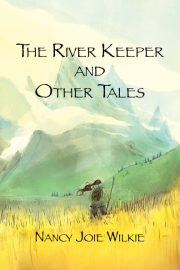What Makes the Monstrous
 by Paul Jessup
by Paul Jessup
Monsters and genre fiction go hand in hand. Or rather, claw in claw, if we’re being cheeky about it. From the mad science creations and aliens of science fiction, to the supernatural and mythic of fantasy and horror, there are monsters everywhere, even from the very start. Island of Doctor Moreau, Dracula, Frankenstein, right down to the Nordic Eddas and Indian Vedas themselves.
You could say it’s in the very DNA of humanity itself to create the monstrous. And since I enjoy writing about the creatures so much, I thought I would take a stab at a blog article ruminating on monsters. Mainly I want to see what makes the memorable monsters tick, what are they constructed from? How do we see them, and why are they memorable? Why do these monsters stick to us, psychologically, culturally, and why do others just kind of fall flat and are forgotten?
First off, let’s take a stab at defining what I mean by monstersand the monstrous.
-They have humanity. Even though they are not purely human, they contain enough features of being human to give readers empathy for the monster. Such features are empathy towards others, human emotions (love, hate, anger, etc), and the joy of art or creativity, to name a few.
-They are animalistic. They contain beastial natures that come across as primal and both contrast and amplify the humanity.
-They are grotesque. This is a key element that separates the monstrous from the simply villainous or a simple supernatural beast/creature.
-They have a strong, easily identifiable personality. This personality is usually expressed through the first two items on this checklist. The monsters humanity and how it is grotesque helps reveal the personality to the reader.
So, by this logic a mermaid isn’t a monster because it’s not grotesque, even though it fulfills the rest of our criteria. But, the creature from Shape of Wateris, because it is grotesque and follows the rest of the list. Okay, definition is down let’s move onto the next bit. What makes them stick and others fail? I think it all boils down to personality.
One monster with mental stickiness that almost everyone knows is Gollum. He is a grotesque hobbit, transformed into a monster with a distinct personality and a primal, animal nature from living in caves for so long. He is also human in his internal struggles and moral relativity, and the way the other characters (and the readers) empathize with him and feel sorrow and pity at his monstrous nature. His unique personality is what makes him stick in our mind and become iconic.
Another key aspect is the design of a monster. Fiction is not necessarily a visual medium, but the grotesque is visual and thus the descriptions of monsters that stick with us are potent in their imagery. The Minotaur of Crete. Cthulhu. Dracula. Frankenstein’s Monster. The Thing from Who Goes There?Even the monster of a house in The Haunting of Hill House. These all have powerful, iconic designs that stick with you by description alone.
And it all goes back to personality, doesn’t it? A design that creeps around in your mind is one that reflects the unique personality of the monster itself, and enhances their appeal. Helps the, stick around in our minds so much more.
And what a thing it is when it’s accomplished. Nothing appeals quite like a monster in the mind. They last longer than heroes, than villains, then anyone else within the text. They shine with their own horrible light, and bring us closer and closer to who we are people, and how define both ourselves and the others that surround us.
•••
Paul Jessup is a critically acclaimed/award-winning author of strange and slippery fiction. His novel Close Your Eyes is currently out from the Apex Book Company. You can visit him at pauljessup.com or on Twitter at @pauljessup.


